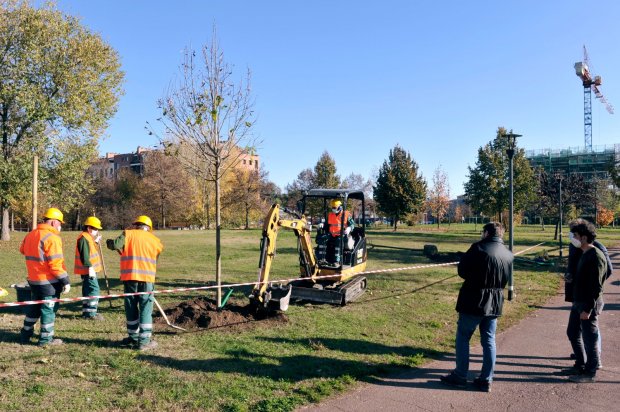ForestaMi: Milan’s future in the shade

Milan has never lacked the capacity to think ahead, and it has recently launched a long-term plan to counterbalance the side effects of its own growth and success. The goal of the project “ForestaMi” is to make the city a lot greener by planting a huge amount of trees throughout its metropolitan territory.
As the world continues its fight against the covid-19 pandemic, with untold suffering and a growing confidence the end may be in sight, people and authorities everywhere have become painfully aware that, once everything is over, things cannot simply go on as they used to. Fundamental changes must be introduced in everybody’s way of living and in the organization of work, transport, travel and urban development. It is by now sufficiently clear that big trouble is in store when nature’s rhythms are disregarded or forced. It is also quite evident that temperatures are rising. It once used to snow in Milan during winter, and fog was considered a part of the city’s brand; while these have now almost disappeared, summers are increasingly hot, and downpours sometimes devastating.
Milan has never lacked the capacity to think ahead, and it has recently launched a long-term plan to counterbalance the side effects of its own growth and success. ForestaMi, which puns on the double meaning of mi in Italian - at the same time an abbreviation of Milan and a pronoun - means both “turn Milan into a forest” and “turn me into a forest”. It successfully describes its goal: make the city a lot greener by planting a huge amount of trees throughout its metropolitan territory. A detailed mapping of the most appropriate areas has been carried out (253 have been defined, for a total of 713 hectares) and work has already begun: almost 200.000 trees are already in place: but there is more to it than just planting trees.
This wide-reaching project, which is sponsored by the Milan City Hall, the Metropolitan City Administration, Milan’s Parco Nord and Parco Agricolo Sud, together with the Milan Polytechnic and a number of private stakeholders, is supervised by Milanese star architect Stefano Boeri. He famously designed the award-winning Bosco Verticale (or vertical forest) residential complex, all covered up in trees, shrubs and perennial plants that absorb carbon dioxide, mitigate temperatures both in winter and summer and protect from noise and from the sun’s glare.
ForestaMi encompasses a number of strategies towards its primary goal of planting 30M trees in the Milan metropolitan area by 2030 (roughly one for each resident), which can be summed up as follows: increase green and permeable areas; increase green roofs by 90%, clean up abandoned or polluted soil through phytoremediation, transform school, university, hospital and private courtyards into green areas, promote the creation of urban vegetable gardens, establish an orbital wood all around the metropolitan area, beef up the green in public parks.
Everyone is invited to join in this effort to clean air and attain a higher quality of life in the city: once completed, it is estimated ForestaMi will cut up to four fifths of CO2 emissions and lower summer temperatures by two/three degrees . The forest must be conceived as if one’s own: citizens can finance the project with chosen sums through the forestami.org website, while businesses are invited to invest in tailored projects, within a network of public and private partners that is of paramount importance for success.
A marked increase in biodiversity, one of the project’s expected outcomes, should also lead towards a healthier environment. Agricultural output (Milan is the second city in Italy for agricultural soil extension and the first for agricultural production) should greatly benefit by the existence of an urban wood, while insects and animals, birds especially, are expected back in greater numbers. This will be an outcome of the connections the new urban park will provide between existing and new green areas, green corridors that will allow for the regeneration of both plant and animal species.
Milan, resting on a water-rich plain, is after all the perfect place for trees to prosper. In not-so-distant 2026, the year of the Winter Olympics that Milan is getting ready for, 2M trees should already be in place, along with 20 new city parks. The quality of Milan’s air should by then have dramatically improved. Visitors in the immediate post-pandemic future will be in a position to appreciate the change, starting from places like Biblioteca degli Alberi where 500 trees and 135.000 plants have been placed on disused terrain. There is a good chance that, even on one of those sweltering Milanese summers, they will find a place in the shade.


